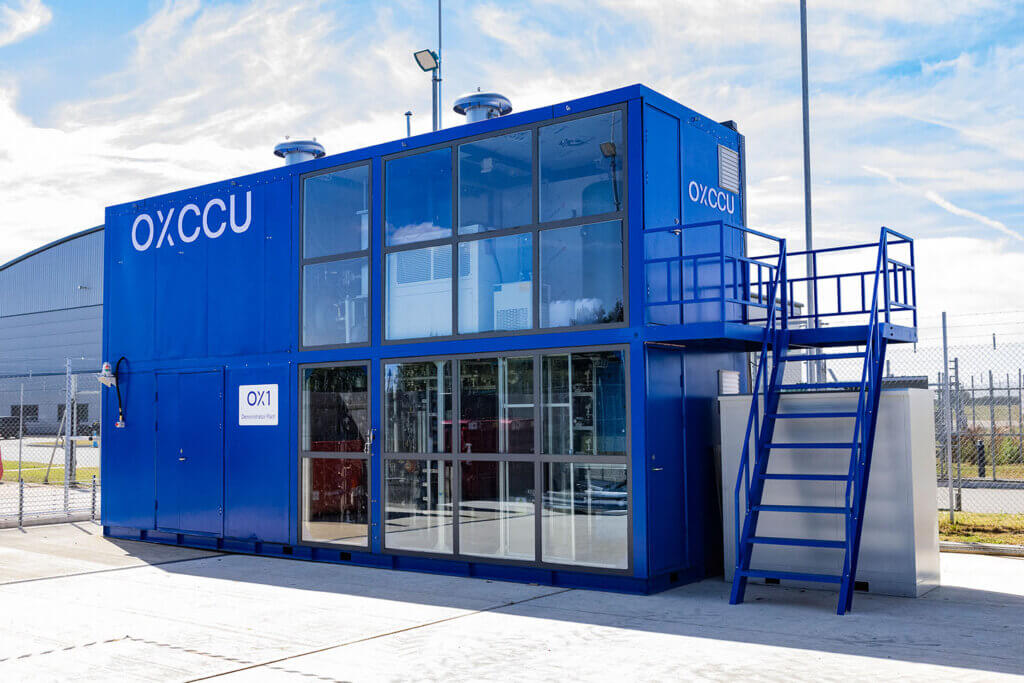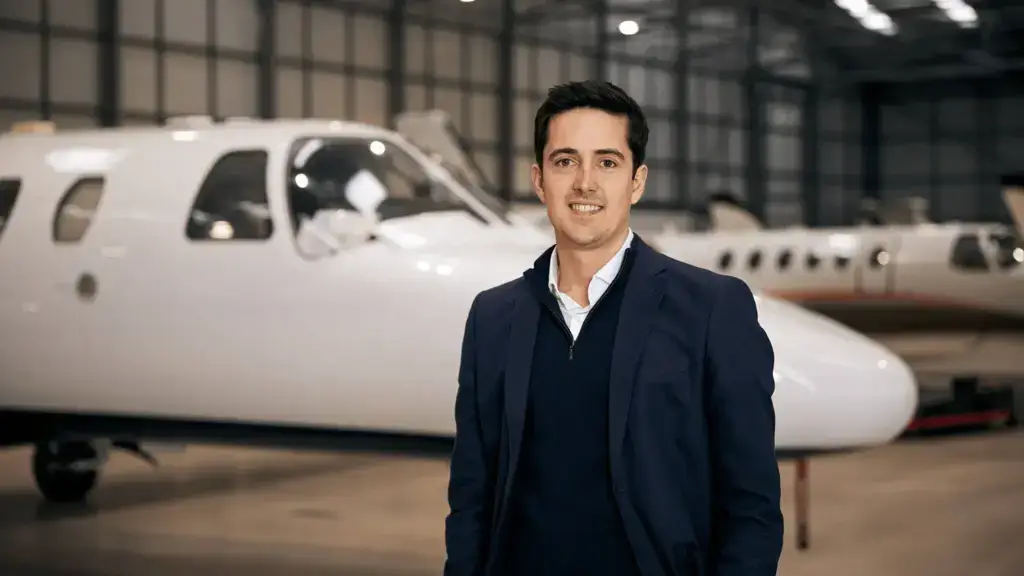The Future of Flight Takes Shape in Oxford
What appears to be an ordinary shipping container at Oxford Airport actually houses a remarkable technological breakthrough that could reshape aviation’s environmental footprint. The OX1 machine represents years of dedicated research into sustainable aviation fuel (SAF) production, converting carbon dioxide and hydrogen into liquid fuel through an innovative process.

Operational since September 2024, this demonstrator currently produces 1kg of liquid fuel daily. OXCCU has established a clear development roadmap, with plans for a larger demonstration plant at Oxford Airport next year, followed by a full commercial facility. The technology aims to significantly contribute to the aviation sector’s challenging mission of achieving net-zero carbon emissions from operations by 2050.
The Oxford-based startup has secured impressive financial backing, with Aramco Ventures becoming a key investor in 2023. Other notable investors include United Airlines, Eni, and Trafigura, representing strong industry confidence across both aviation and energy sectors.
Revolutionary Single-Step Synthesis
The core innovation behind OXCCU’s approach lies in its catalyst-driven process that converts captured CO₂ and hydrogen directly into SAF in one seamless step. This represents a significant departure from traditional methods that require multiple conversion stages.

Andrew Symes, CEO and co-founder of OXCCU, explains the fundamental advantage: “What we have is a simplification of existing routes to make sustainable aviation fuel, which enables a lower cost plant and a lower operating cost process.” Symes brings valuable perspective to the venture, having studied chemistry at Oxford before gaining experience in commodity trading and venture capital.
The technological breakthrough builds upon the historic Fischer-Tropsch chemical process but incorporates a groundbreaking catalyst developed by fellow co-founder Dr. Tiancun Xiao. “Tiancun published a paper in 2020 that generated worldwide media coverage and which essentially showed for the first time [in the laboratory] that you could go from CO₂ and hydrogen directly to the jet fuel range hydrocarbons with one catalyst in a single step – avoiding the need to make intermediates such as carbon monoxide or methanol,” Symes notes.
This innovation tackles a critical obstacle: the traditionally high cost of synthesising sustainable aviation fuels. By eliminating the need for intermediate compounds, OXCCU’s method requires less hydrogen input per unit of jet fuel produced. This efficiency translates to reduced capital and operating costs, potentially yielding a more economical Power-to-Liquid (PtL) SAF.
The Net Zero Challenge for Aviation
The aviation sector faces perhaps one of the most demanding decarbonisation journeys of any industry. With air traffic volumes steadily increasing and projections indicating continued growth, the challenge of reducing carbon emissions becomes particularly acute. Traditional aviation fuels account for substantial greenhouse gas emissions, placing pressure on the industry to find viable alternatives.

According to the International Air Transport Association (IATA), sustainable aviation fuels must deliver approximately 65% of total emissions reductions to reach the industry’s ambitious 2050 net-zero emissions target. This figure underscores the monumental role SAF must play in aviation’s environmental strategy.
The complexity of this challenge stems partially from aviation’s unique energy requirements. Aircraft demand fuel with exceptionally high energy density, specific combustion properties, and rigorous safety standards—characteristics that conventional renewable fuels often struggle to match. OXCCU’s approach specifically addresses these demanding criteria while maintaining compatibility with existing aircraft and infrastructure.
Policy frameworks worldwide have begun establishing concrete targets for SAF adoption. The European Union’s ReFuelEU initiative, for example, mandates increasing percentages of SAF blending over coming decades. Similar regulatory environments are developing globally, creating both compliance requirements and market opportunities for technologies like OXCCU’s.
Meeting Aviation’s Environmental Targets
Market demand for SAF will likely develop through multiple channels. Government mandates requiring sustainable fuel adoption will create regulatory demand, while voluntary uptake by private jet operators will establish market-driven consumption. Symes observes: “We will probably see the emergence of markets where SAF is mandated and we may also see voluntary demand that could also be facilitated by the airlines and fuel suppliers, driven by corporates choosing to buy SAF to offset their Scope 3 emissions.”
Current SAF production relies heavily on limited feedstocks like used cooking oil and agricultural waste. This constraint has directed attention toward emerging technologies capable of meeting projected demand growth through alternative production methods.
Scaling Toward Commercial Viability
The OX1 demonstrator marks a crucial step in proving the technology’s feasibility at increasingly commercial scales. OXCCU envisions integrating their systems with industrial facilities to utilise point source carbon dioxide emissions, creating a circular approach to carbon management.
“The ultimate goal is to have a plant in operation with our technology by the end of the decade,” states Symes, outlining a clear timeline for commercial implementation. This ambitious yet measured approach reflects the practical challenges of scaling novel fuel production technologies.
The investment from Aramco Ventures fits within a broader portfolio strategy supporting innovations across energy and mobility sectors. Such financial backing provides essential resources for navigating the complex pathway from laboratory breakthrough to commercial deployment.
As aviation confronts its environmental responsibilities, OXCCU’s technology exemplifies how academic research, when properly commercialised, can deliver practical solutions to global challenges. The Oxford Airport demonstrator may appear modest in its current form, but it potentially represents a transformative chapter in aviation’s sustainability story.


